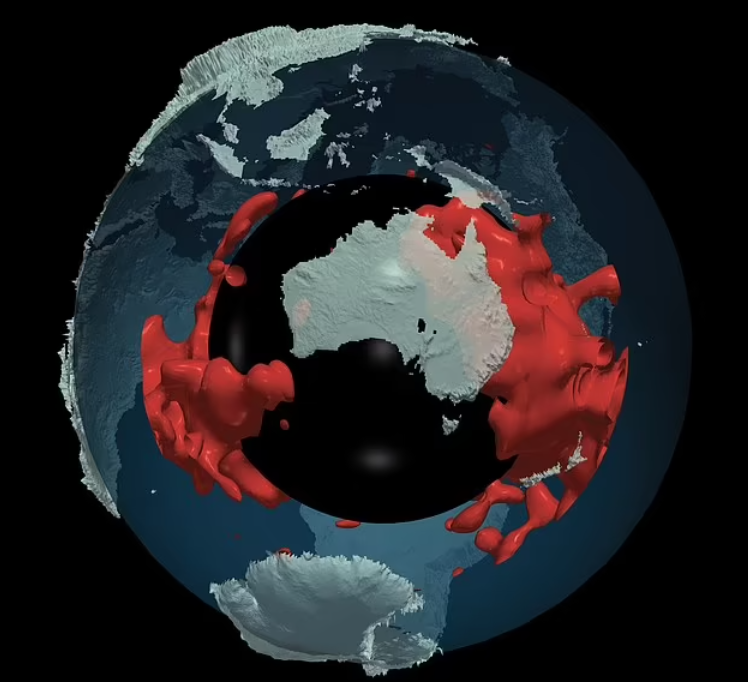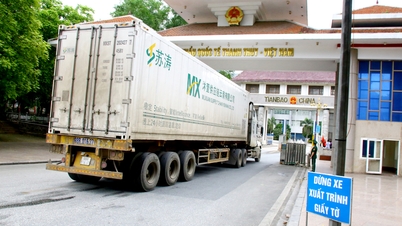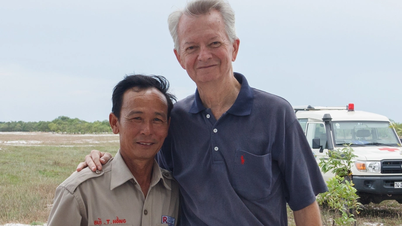
Since Edmund Hillary and Tenzing Norgay first conquered Mount Everest in 1953, conquering the world's highest peak has been the goal of most climbers on the planet.
According to the Dailymail, however, this famous mountain cannot be compared to the two mysterious mountains, which are 100 times higher than the 8,800 meter Mount Everest.
At around 1,000 km high, these giant rocky “islands” the size of entire continents dwarf everything else on our planet.
According to scientists at Utrecht University, these giant peaks are not located on the Earth's surface but are buried at a depth of about 2,000 km below our feet.
Researchers estimate that these mountains are at least 500 million years old but could date back to the formation of the Earth, some 4 billion years ago.
“No one knows what these mountains are and whether they are just a temporary phenomenon or have been around for millions or even billions of years,” said lead researcher Dr Arwen Deuss.
These two giant structures lie at the boundary between the Earth's core and the mantle, the semi-solid, semi-liquid region below the crust that lies beneath Africa and the Pacific Ocean.
Surrounding it is a “graveyard” of tectonic plates that have sunk down from the surface in a process called subduction.
In a new study, researchers found that these islands are much hotter than the surrounding Earth's crust and are millions of years older.
Scientists have known for decades that there are vast structures hidden deep in the Earth's mantle.
This may happen because of the way seismic waves from earthquakes travel through the planet's interior.
A strong earthquake causes the Earth to vibrate like a bell, sending shock waves that travel from one side of the planet to the other. But when these waves pass through something dense or hot, they slow down, weaken, or reflect completely.
So by listening carefully to the “sounds” from the other side of the planet, scientists can build up a picture of what lies below.
Over the years, studies have revealed that there are two giant regions in the mantle that slow down seismic waves significantly, called the “Large Low Seismic Velocity Provinces (LLSVPs). These two LLSVPs are the two mountains that are hundreds of times taller than Everest that we mentioned above.
“The waves slow down because the LLSVP is hot, just like you can't run as fast in hot weather as you can in cold weather,” says Deuss.
When waves pass through a very hot area, they need to expend more energy to move. This means that the sound of waves passing through hot LLSVPs will be out of tune and quieter than other areas. This is an effect that scientists call damping.
However, when the researchers examined the data, they unexpectedly found a different picture. “Contrary to our expectations, we did not see much damping in the LLSVPs, which would make the sound there sound very loud,” said study co-author Dr. Sujania Talavera-Soza. “But we did see a lot of damping in the cold patch graveyards, where the sound sounds very quiet.”
Rock fragments from the crust cause much of the damping because they recrystallize into a tight structure as they sink near the core.
This suggests that the mountains are made up of much larger mineral grains than the surrounding plates because these grains do not absorb as much energy from the passing shock waves.
“These mineral grains couldn't have grown overnight, which can only mean one thing: LLSVP is much older than the surrounding graveyard,” says Talavera-Soza.
At the very least, researchers estimate that these seamounts are at least 500 million years old. But they could be much older, potentially going back to the formation of the Earth.
This goes against the traditional notion that the coating is always in a state of constant motion.
Although the coating is not actually a liquid, it still moves like a liquid over very long periods of time. It was previously assumed that the coating would therefore be well mixed by the currents.
But in fact, these structures are billions of years old, suggesting they have not been moved or disrupted by mantle convection currents, which means the mantle is not as well mixed as previously thought.
Recently, scientists have proposed that LLSVPs may be remnants of an ancient planet that collided with Earth billions of years ago.
Some researchers believe the Moon formed when a Mars-sized planet called Theia collided with Earth, sending molten debris from both planets into orbit.
Since the Moon is much smaller than Theia's mass, this raises the obvious question: where did the rest of the planet go?
According to researchers from the California Institute of Technology, the LLSVPs could be the remains of a collision with Theia.
After running a series of simulations, the researchers found that a large amount of material from Theia – about 2% of Earth's mass – could have entered the ancient Earth's lower mantle.
That explains why these areas appear to be denser, hotter, and older than the surrounding plate graveyard.
Source: https://doanhnghiepvn.vn/cong-nghe/gioi-khoa-hoc-boi-roi-khi-trai-dat-co-2-ngon-nui-bi-an-cao-gap-tram-lan-everest/20250127093835625


![[Photo] General Secretary To Lam begins official visit to Russia and attends the 80th Anniversary of Victory over Fascism](https://vphoto.vietnam.vn/thumb/1200x675/vietnam/resource/IMAGE/2025/5/8/5d2566d7f67d4a1e9b88bc677831ec9d)

![[Photo] President Luong Cuong presents the decision to appoint Deputy Head of the Office of the President](https://vphoto.vietnam.vn/thumb/1200x675/vietnam/resource/IMAGE/2025/5/8/501f8ee192f3476ab9f7579c57b423ad)
![[Photo] National Assembly Chairman Tran Thanh Man chairs the meeting of the Subcommittee on Documents of the First National Assembly Party Congress](https://vphoto.vietnam.vn/thumb/1200x675/vietnam/resource/IMAGE/2025/5/8/72b19a73d94a4affab411fd8c87f4f8d)
![[Photo] General Secretary concludes visit to Azerbaijan, departs for visit to Russian Federation](https://vphoto.vietnam.vn/thumb/1200x675/vietnam/resource/IMAGE/2025/5/8/7a135ad280314b66917ad278ce0e26fa)
![[Photo] Prime Minister Pham Minh Chinh meets with the Policy Advisory Council on Private Economic Development](https://vphoto.vietnam.vn/thumb/1200x675/vietnam/resource/IMAGE/2025/5/8/387da60b85cc489ab2aed8442fc3b14a)











![[Video] Institute of Social Science Information celebrates 50th anniversary](https://vphoto.vietnam.vn/thumb/402x226/vietnam/resource/IMAGE/2025/5/8/541d6946f8a14ed3824d7a3edafc652c)















































![[Photo] Prime Minister Pham Minh Chinh talks on the phone with Singaporean Prime Minister Lawrence Wong](https://vphoto.vietnam.vn/thumb/402x226/vietnam/resource/IMAGE/2025/5/8/e2eab082d9bc4fc4a360b28fa0ab94de)


































Comment (0)